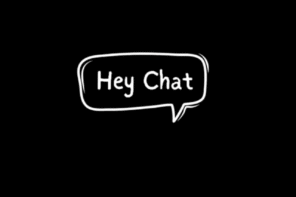Since the first week of January, influenza infections have been unusually high and will continue to rise. Not only is Influenza A, the most common form of the virus, on the rise, but so is Influenza B, which despite its slower maturation rate, is circulating much earlier this year than in the past.
Influenza A is most often the strain that causes epidemics, and is the most prevalent strain this flu season. It is hosted by birds, and tends to be characterized by a larger number of infected individuals and more acute symptoms. Influenza B is hosted only by humans, and is usually less severe and less common. The two share symptoms, however, including fever, chills, a runny nose, and muscle aches. The majority of the time, both A and B are nonfatal, but can sometimes be deadly. 82 deaths have been reported to date this winter flu season.
As noted in a Global News article, the immense volume of flu patients this season can potentially be attributed to this year’s earlier flu epidemic in Australia and other parts of the Southern Hemisphere, where flu rates reached an all time high. Their winter runs from March through May, and is often thought to be a good indicator of how the Northern Hemisphere will fare. As noted by Carmen Chai of Global News, “Scientists look at the patterns and make their predictions based on which viruses made their rounds in the Southern Hemisphere and estimate what mutations could occur before the influenzas make their way over the equator.”
As for flu rates in Quebec, the government’s recent decision to ban clinics and doctors’ offices from charging a small fee for vaccines and other procedures that are already covered by the Régie de l’Assurance Maladie du Quebec (RAMQ) may have had an adverse effect on the number of flu infections. Though intended to reduce costs and increase efficiency, removing the option to be vaccinated by one’s own doctor has resulted in a much lower vaccination rate this year than in previous years.
Some students, however, are taking their health into their own hands. Hannah Weir, a psychology student from Ontario, went to a local Montreal pharmacy to receive the flu vaccine. She told The Bull & Bear that “it is a great way to protect yourself and, by extension, those you come into contact with on the daily, from getting sick.”
Another student, who wished to remain anonymous, had the flu during the first week of the winter semester. She described her experience as far worse than any other time she’s had the flu because of the unusual gastrointestinal symptoms that came along with it. She claims to have been out of commission for several days, hardly able to get up and walk around her apartment, much less attend classes, grocery shop, or catch up with friends. Ultimately, unable to get an appointment at the McGill clinic, she saw a doctor at a private clinic near campus, who informed her that the flu this year was particularly aggressive and accompanied by unusual stomach symptoms. The doctor also noted that the flu vaccine this year was only around 10% “accurate” in terms of how well it fights the virus, compared to its usual 30%. It took almost a week before this student was feeling like herself again.
Dr. Marc Baltzan, a respiratory specialist and Adjunct Professor of Epidemiology, Biostatistics, and Occupational Health at McGill, has already lost two patients to the flu since Christmas. He stated that the new policy towards vaccines has been a direct contributor to the high flu rates: “This year, a minority of the population was vaccinated. Even healthcare professionals weren’t.” He went on to say that “depending on the clinic and how much they depended on the fees, staff were let go, and they were the staff that either organized the vaccines or delivered them because they were the ones qualified to do so.”
Dr. Robert Allard, Associate Professor in the Department of Epidemiology, Biostatistics, and Occupational Health, also believes that decreased vaccination rates have played a role in the number of flu cases at McGill. “There is more transmission among McGill students this year than in previous years, [which] probably reflects the fact that there is more transmission among the general population,” he noted in an email to The Bull & Bear.
Dr. Baltzan further articulated that the Ministry of Health sets rules to determine which portions of the population are considered at-risk, and targets those groups for vaccination. This includes those with certain chronic illnesses, the elderly, and small children. “The problem is, most people aren’t in the target population. If the whole population is unvaccinated, [the flu] hits a lot more people, and the target population [still] gets sick. If you’re too targeted with your vaccinations, and are only vaccinating 1% of your population, the [majority] remains largely unvaccinated. Then an epidemic can go out of control, and that’s what happened here.”
He further warned that McGill students are not targeted by the Ministry due to the fact that they are often high-income, not chronically ill, and many are not from Quebec. According to Baltzan, this alongside the social lifestyle and sleep deprivation that comes with being a student, puts them especially at risk.
Other than getting a flu shot, the virus can be avoided by refraining from close contact with infected individuals, washing your hands frequently, and covering your mouth and nose in public places. Lots of sleep, a balanced diet, and staying hydrated all promote good health and a strong immune system.








